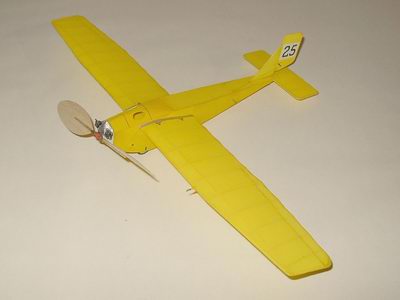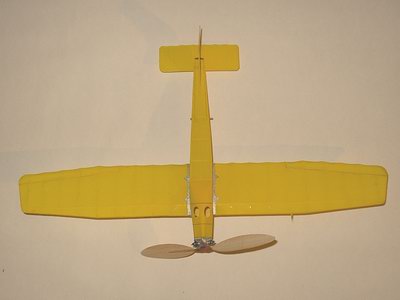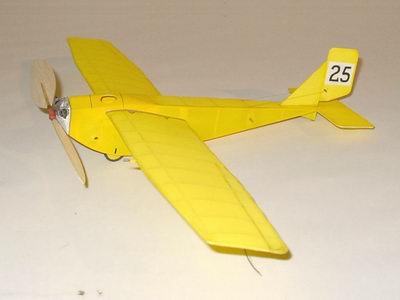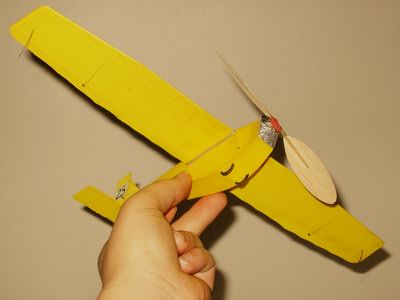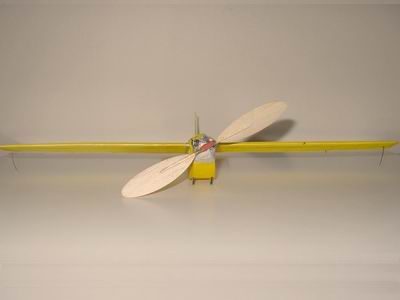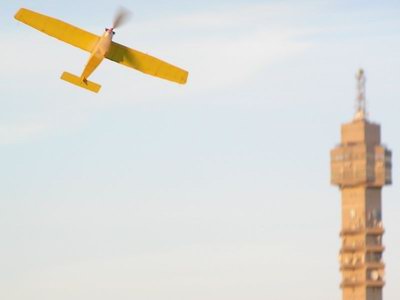Handley-Page Sayers
Click on an image to see it in high resolution
About the model
A peanut by Andrea Hartstein, built in 2002. Structure is balsa, except for the upper side of the nose (cockpit fairing) which is made from blue foam. Covering is mylar, which was
then airbrushed with yellow Tamiya acrylic paint. The blue foam nose piece had to be brush painted with a fairly thick layer of paint to prevent
the blueness shining through. As it has a scale size stabilizer and minimal dihedral, trimming was approached with some trepidation. After a few testflights, the
plane did however find a left circling pattern to its liking, achieved by a dint of left rudder and thrustline. The main difficulty was that at low power near
the end of the flight, the plane started to turn right, eventually spiralling in. This is apparently a common problem with left circling trim, compounded here by the lack of dihedral. It was partially solved by increasing the rubber dimension, thereby
decreasing the low-power part of the flight (flying mostly on the flat part of the torque curve). Another quirk of this plane is that when the C.G. is too far back, it does not properly stall. Instead it enters
a tight turn (probably permanently tip stalled) without gaining any height. Despite some remaining trimming issues, it will fly for over 60 seconds, and it won the peanut class at the 2003 and 2006 Swedish
indoor championships.
Some data:
Span: 34 cm (but qualifies as peanut under fuselage length rule)
Weight (without rubber): 3.05 grams, whereof nose assembly 1.35 gram
Best flight: 71 seconds
About the origial
The HP Sayers was built for the 1923 Lympne light-plane competitions, and was based on the SCW-glider of the 1922 Itford gliding competition.
The first tests did not go off too well, as the plane simply refused to leave the ground. Attempts were made to launch it with bunjee-ropes
in glider fashion, but to no effect. The Sayers was then extensively redesigned, and by some hard work it was ready in time for the competition.
The bad luck persisted however, as the engine broke down after a short time. The HP Sayers was thus not one of the more successful aeroplanes.
In fact, it has been described as a singularly bad one. It was reported to have poor flying qualities, with insufficient rudder & aileron control.
The worst shortcoming must however have been the field of view from the cockpit, or rather the lack of it! As the pilot sat buried in the fuselage,
with only the two small port-holes to look through, it is difficult to understand how it ever could be landed without accident.
Documentation; 3view + photos + history in "Ultralights, the early British classics" by Richard Riding
